QuestionQUESTION: Hello David I have a problem with my 65 gallon freshwater tank. Problem Im having with this is cloudy water 3 and half months now and ammonia presence every couple of days of .25. Ive had this tank for about 3 1/2 months and the cloudiness has not left. I used bclear but I stopped using it because my fish would not be active and some of them would be gasping for air on the top. I have an aqua filter and a fluva 305 filter both rated for 70 gallons. That tank has been cycled for almost 2 months and its planted. I have 3 bamboo shrimp, 1 blue bovlian rams, one leopard gouramie, 12 rummy nose tetras, 6 serpae tetra, 4 red eye tetras, 1 platy, 3 guppies and 2 white clouds. Ph level 6.0 nitrates less than .5 and nitrites 0. I dont know why I get ammonia every two days. I change 25% of the water every two days. I dont think Im overstocked either most of my fish are small and with the two filters I shouldnt be having a problem unless Im wrong.
My second tank a 20 gallon freshwater tank I only have a small corrie and about 40 cherry shrimp and every two days I have ammonia aswell about .25. Its lightly planted aswell and Ive had this tank for about 6 months. Used to have fish in that one but I transfered them to my 65 gallon. I tested my tap water and it contains no ammonia. I also use the API liquid test kit. I know the test kit is not giving me false readings because even my newest bottle of api ammonia is giving me the same readings.
ANSWER: Hi peter: ... interesting quandary... I would also say that your PH is low... it should be about 7.2 or 7.4. Is the cloudy grey??? do you clean the gravel when you do your water changes??? I ask because fish feces and left over food will find its way down into the gravel and create ammonia....are you over feeding your fish???? also I think that you are changing your water too often... 25% once a week should be fine... When you take out 25% of the water the tank has to start over trying to cycle... the cloudy water is probably due to what we call "new tank syndrome." For the next week try to change only 10% of your water and check your ammonia levels daily... but make sure that you are gravel vacuuming your tank to remove the water... you can get a gravel vacuum at the aquarium for about $12... I use a five gallon bucket and as I vacuum the gravel all the dirt and stuff in the gravel goes into the bucket... when you have taken out 10% of the water... empty the bucket (or sooner if its full) and then replace with clean water that is close in temperature.... let me know how this works for you... dave
---------- FOLLOW-UP ----------
QUESTION: Hey David Im answering your last response about the plants and the ph. My 65 is medium planted and I never had nitrates in my tank most likely due to all my plants. My 65 still has the ammonia even after that big gravel cleaning that you had suggested. My 20 gallon is planted aswell and still has the ammonia. Water changes do nothing the ammonia comes back after two days to .25. Im completely lost I cant find a solution to this problem.
AnswerHi Peter: Almost all tanks will show traces of both ammonia and nitrates... they are just part of the process of having fish. Yes we prefer the levels to be a zero but the reality is that fish poop and never eat every single bit of food and in between gravel vacuums the tank itself will try to clean up the mess... and that process gives way to ammonia and nitrate. I have attached a bit of information on this process... hope it helps... dave
FEEDING FISH:
Feed your fish only what they will eat in 3 minutes. If after three minutes there is still food in your water... reduce feeding amount next feeding cycle. If there is no food in the water then feed them a bit more... but just a bit. I feed my fish twice per day and clean my gravel weekly. I do not normally have a fish death nor out break of disease.
TANK WATER:
Tank water is a balance of biological and chemical elements. When a new tank is cycled and the water chemistry tests perfect then you add fish. Please add fish in small numbers 3-4 per ten gallons of water. The reason for adding fish slowly is that fish are both a biological and chemical attribute to tank water conditions.
Fish affect both the biological and chemical elements in the tank by eating up nutrients and providing waste as well as using oxygen and expelling carbon dioxide. Nutrients, oxygen and carbon dioxide all impact the beneficial and non-beneficial bacteria in your tank. They also change the chemical attributes of tank water by depleting oxygen and adding carbon dioxide as well as pooping and urinating in the tank water. Fish poop and urine contribute to ammonia, nitrates, and nitrites through the process of decomposition which usually occurs in the tank gravel. This is why fish keepers must clean the tank gravel. Do not rely on bottom feeders and algae eaters to clean the tank gravel. They do not want to eat poop anymore then you do.
When you add fish to a tank it is expected that both the biological and chemical aspects of the tank will change. Biologically speaking the tank may cloud as the bacteria levels within the tank and tank water try to adjust to meet the new condition. Chemically the tank water changes when fish are added because of the increased need for oxygen (by the fish) and the addition of carbon dioxide (by the fish) as well as the opportunity for decomposition of fish wastes. This is why you see an increase in either ammonia (breaks down fish waste) or nitrate/nitrites after adding fish.
The nitrate cycle begins with fish waste/left over food which when broken down becomes a contributing element of ammonia. Ammonia as it is further broken down by beneficial bacteria becomes nitrate and the chemical chain continues as the nitrate becomes nitrite which is eventually used by live plants or absorbed through the filter (carbon.)
I like to think of tank water as a single creature that is made up of bacteria and chemicals. When you consider that tank water is an animal it is easier to deal with then trying to fix single issues within an environment because every aspect of tank water is somehow connected to every other aspect of the water. Chemicals rely on bacteria and bacteria rely on chemicals to affect each other both positively and negatively throughout the daily cycle. Live plants and fish are both important parts that make up the creature I refer to as tank water. Obviously those are the aspects of this creature that we want to preserve. However, when treating issues that affect both fish and plants one must consider the unseen elements of tank water as well. The goal of every hobbyist should be to balance their tank water (creature.) and this means not over reacting to how certain elements within that creature change. The important thing to remember with tank water is that it will readjust to what is normal for it and the definition of normal is not a constant factor both regionally (water quality changes geographically) and daily/weekly/monthly. Healthy tank water does not require constant medication or chemicals to help it cycle. Given time it will cycle naturally and when fish are involved the natural way of tank cycling is much easier on them.

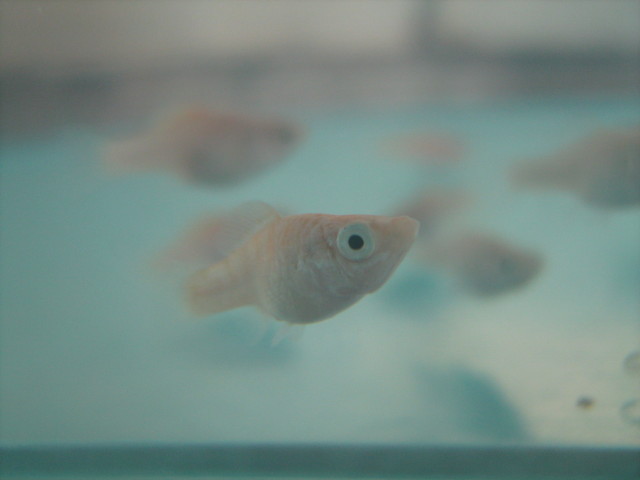 balloon molly fish
Questionmy baby balloon mollys
QUESTION: hi, i a
balloon molly fish
Questionmy baby balloon mollys
QUESTION: hi, i a
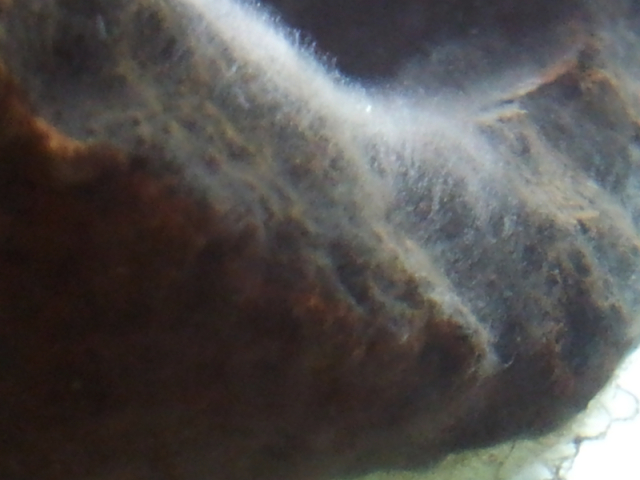 White Algae?
Question
White Fuzz in Aquarium
I have a 7.9 gal
White Algae?
Question
White Fuzz in Aquarium
I have a 7.9 gal
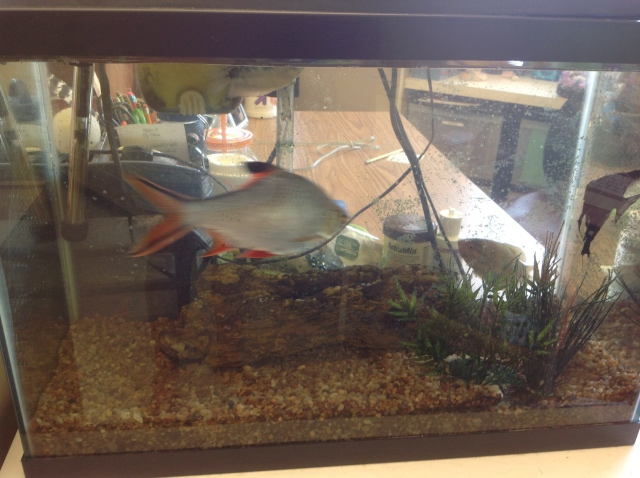 Fresh Water Fish
Question
My Fish Tank
Hi Elizabeth,
I would rea
Fresh Water Fish
Question
My Fish Tank
Hi Elizabeth,
I would rea
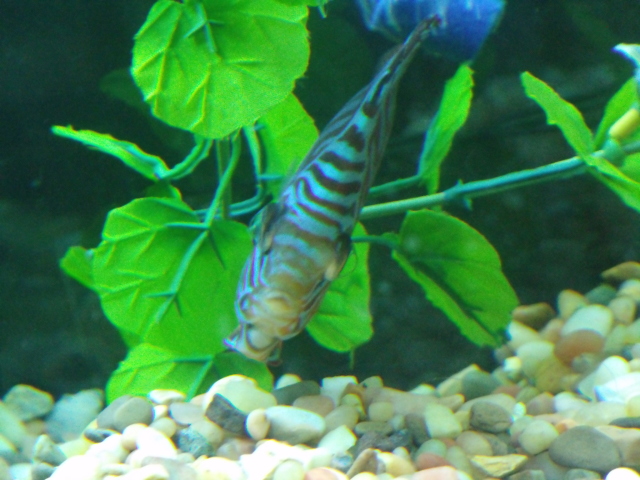 Discus with popeye not eating
Questionpopeye, possible hole
QUESTION: I was d
Discus with popeye not eating
Questionpopeye, possible hole
QUESTION: I was d
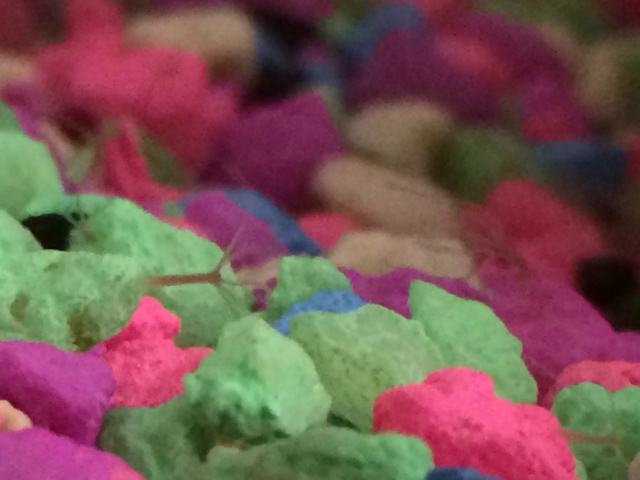 Whats in my tank?!?
Question
Squirming thing Squirming thing
T
Whats in my tank?!?
Question
Squirming thing Squirming thing
T